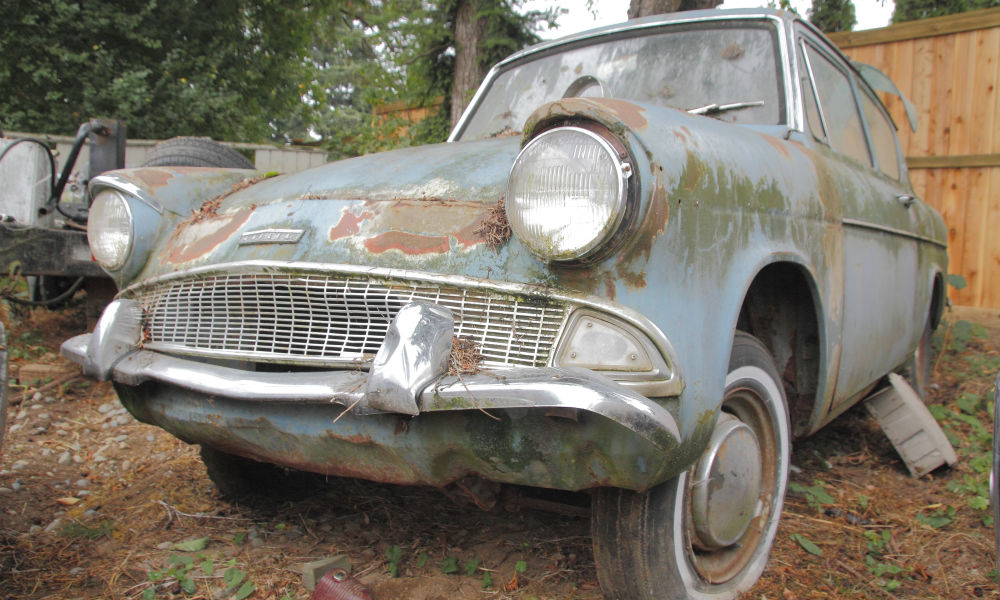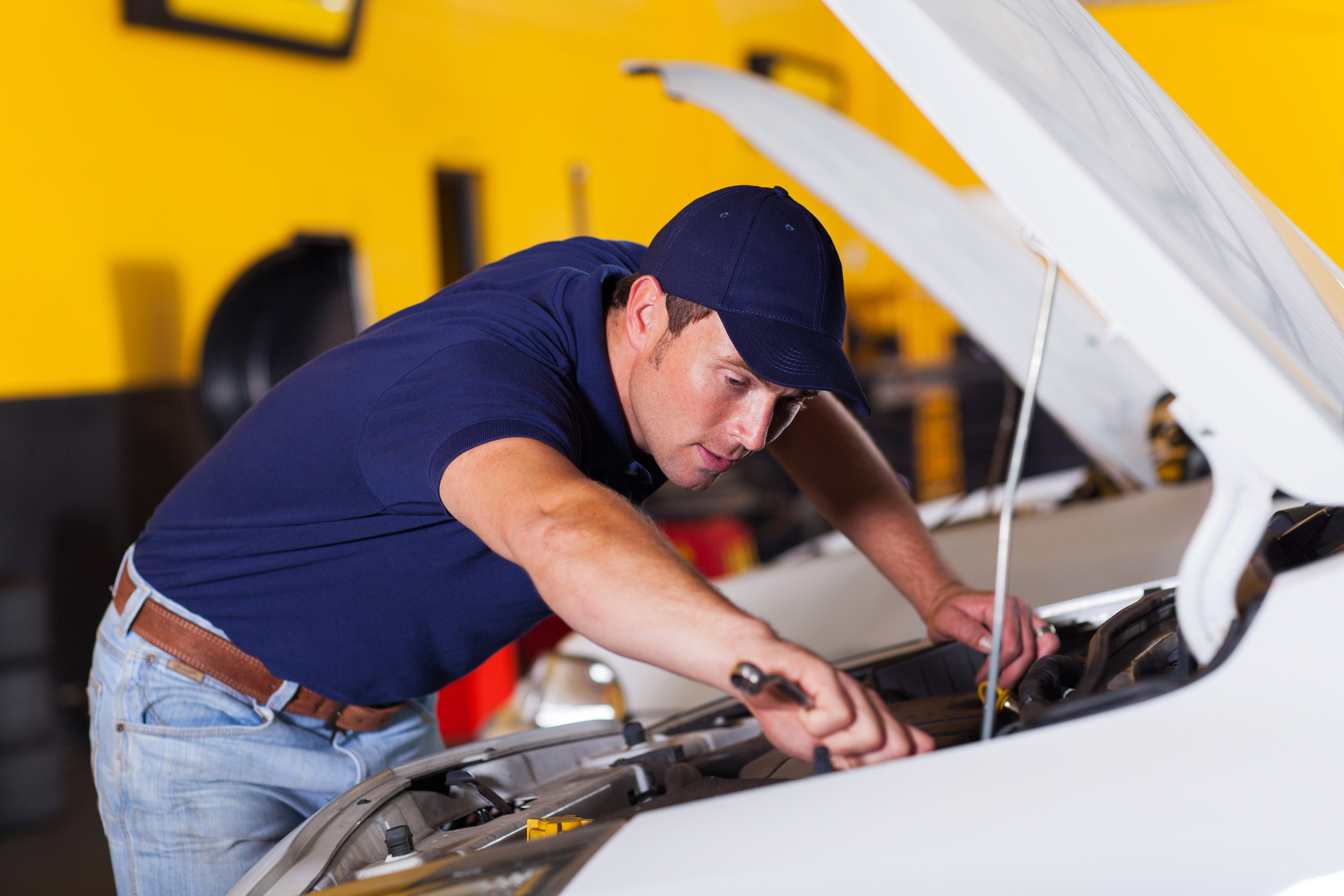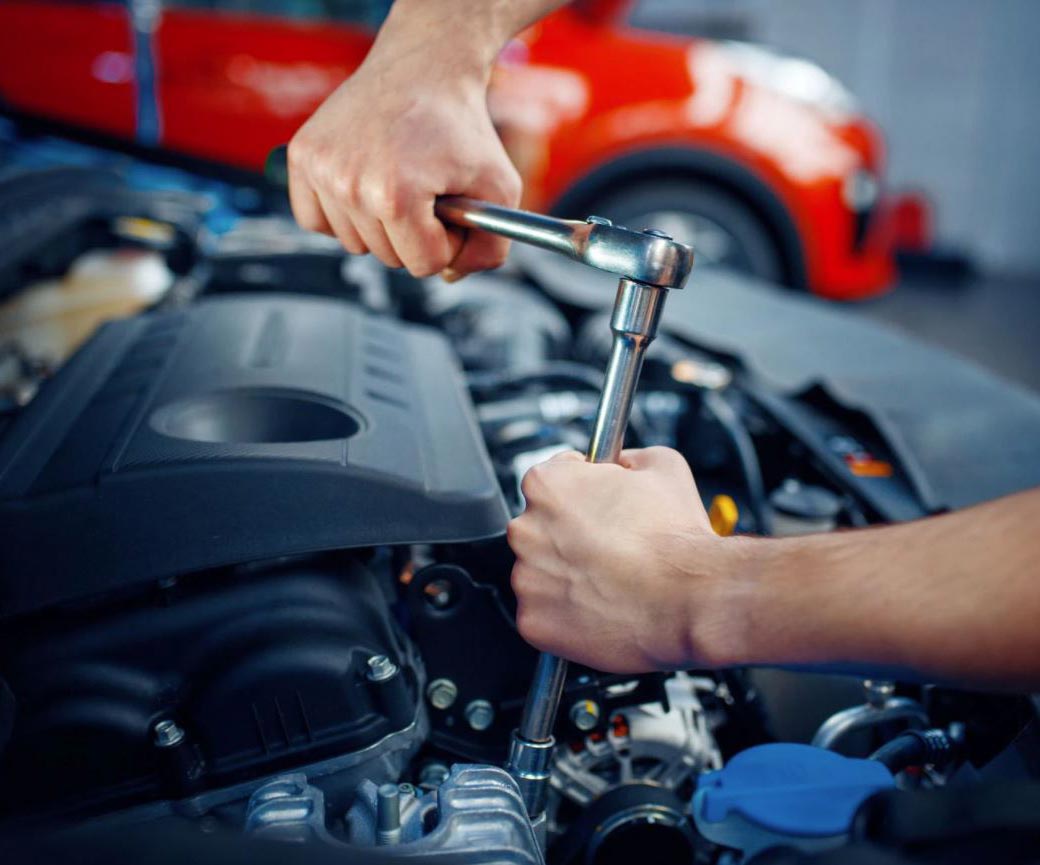Vintage Car Value and Restoration Guide delves into the captivating world of classic automobiles, exploring the intricate factors that determine their worth and the meticulous process of bringing them back to their former glory. From understanding the nuances of collector’s value to mastering the art of restoration, this guide equips enthusiasts with the knowledge and resources to navigate the exciting realm of vintage car ownership.
This comprehensive guide covers everything from assessing the condition of a vintage car to sourcing authentic parts and finding reputable restoration specialists. It examines the historical significance, market trends, and technical aspects that contribute to a vintage car’s value, providing a roadmap for both seasoned collectors and aspiring enthusiasts.
Understanding Vintage Car Value: Vintage Car Value And Restoration Guide
The value of a vintage car is influenced by a complex interplay of factors. It’s not just about the age or make; rather, it’s a nuanced assessment of historical significance, condition, rarity, and market demand.
Factors Influencing Vintage Car Value
Several key factors contribute to a vintage car’s value. Understanding these factors is crucial for both collectors and those seeking to restore and sell their vehicles.
- Make and Model:The brand and model of a vintage car play a significant role in its value. Iconic brands like Ferrari, Porsche, and Rolls-Royce are generally associated with higher values, while less common or less desirable makes might command lower prices.
A Vintage Car Value and Restoration Guide can help you determine the worth of your classic vehicle and guide you through the restoration process. But, it’s also important to consider insuring your prized possession, and a good starting point is to explore Rhode Island Home Insurance Quotes: A Guide for Homeowners to ensure you have adequate coverage for your vintage car.
This can help protect your investment and provide peace of mind, knowing your classic is safeguarded against unforeseen events.
- Year of Manufacture:The year of a car’s manufacture is a primary determinant of its age and historical significance. Cars from specific eras, such as the 1950s or 1960s, often hold higher values due to their historical significance and nostalgia.
- Condition:The condition of a vintage car is arguably the most important factor influencing its value. A meticulously restored car in pristine condition will command a much higher price than a neglected car requiring extensive restoration.
- Rarity:Rarity is a significant factor in determining a vintage car’s value. Cars produced in limited numbers or with unique features are often highly sought after by collectors and tend to appreciate in value over time.
Collector’s Value vs. Market Value
The concept of “collector’s value” differs from the traditional “market value” of a vintage car. Market value is determined by the current supply and demand for a particular car, while collector’s value is influenced by a car’s historical significance, rarity, and sentimental appeal to collectors.
“Collector’s value is often subjective and can exceed the market value of a car, especially for vehicles with unique features, historical significance, or strong emotional connections for collectors.”
Assessing the value of a vintage car involves more than just checking its mileage. Understanding the car’s history, condition, and rarity are crucial, and resources like a restoration guide can help navigate the complexities. While the restoration process may be time-consuming and expensive, it can significantly increase the car’s value.
Similar to classic cars, boat owners also need to carefully consider insurance, especially for military members who may have unique needs. USAA offers specialized boat insurance plans for military personnel, which can be explored at Boat Insurance Quote USAA: A Guide for Military Members.
Once the car is restored and insured, you can confidently enjoy its classic charm and potential appreciation in value.
Examples of Vintage Cars with High and Low Value, Vintage Car Value and Restoration Guide
To illustrate the factors influencing vintage car value, consider these examples:
- High Value:A 1967 Ferrari 275 GTB/4, a rare and highly sought-after model, is known for its sleek design, powerful engine, and racing heritage. Its pristine condition and historical significance have propelled its value to millions of dollars.
- Low Value:A 1970s Ford Pinto, while a common car of its era, has a limited collector’s appeal due to its lack of historical significance, performance, and design features. Its value is likely to be significantly lower than the Ferrari 275 GTB/4.
Identifying Vintage Car Condition

The condition of a vintage car is a crucial factor in determining its value. A thorough inspection is essential to understand the car’s overall health and identify any potential issues that might require restoration or repair.
Bodywork and Paint
The bodywork and paint are the most visible aspects of a vintage car. These components are subject to wear and tear from age, exposure to the elements, and accidents. A comprehensive inspection should assess the condition of the body panels, including any signs of rust, dents, or scratches.
The paint should be examined for fading, cracking, or peeling.
Interior
The interior of a vintage car is a reflection of its history and use. The condition of the upholstery, seats, carpets, and dashboard can reveal how well the car has been maintained. Look for signs of wear and tear, including rips, tears, stains, or fading.
The functionality of the gauges, switches, and other interior components should also be checked.
Determining the value of a vintage car requires careful consideration of its condition, rarity, and historical significance. Restoring a classic car can be a rewarding but complex process, requiring expertise and a significant investment. Before embarking on a restoration project, it’s essential to secure appropriate insurance coverage, and Get a USAA Insurance Quote: A Comprehensive Guide provides valuable information on securing the right policy.
By understanding the intricacies of vintage car valuation and restoration, and obtaining adequate insurance, enthusiasts can safeguard their investment and enjoy the thrill of owning a piece of automotive history.
Engine and Mechanical Components
The engine and mechanical components are the heart of a vintage car. A thorough inspection should include checking the engine’s compression, oil pressure, and coolant levels. The transmission, brakes, suspension, and steering should also be examined for signs of wear or damage.
Documentation and Provenance
Documentation and provenance play a significant role in determining the condition and value of a vintage car. Original documentation, such as the owner’s manual, service records, and registration papers, can provide valuable insights into the car’s history and maintenance.
Provenance refers to the car’s history and ownership. Knowing where the car has been and who has owned it can help to establish its authenticity and value.
Condition Grades
Vintage cars are typically graded based on their condition. The following table Artikels common condition grades and their corresponding descriptions:
| Grade | Description |
|---|---|
| Excellent | The car is in pristine condition, with no visible signs of wear or damage. The paint, interior, engine, and mechanical components are all in excellent condition. The car has been meticulously maintained and may have been restored to original specifications. |
| Good | The car is in good condition, with some minor signs of wear and tear. The paint, interior, engine, and mechanical components are all in good working order. The car may have been restored or maintained to a high standard, but it may have some minor imperfections. |
| Fair | The car is in fair condition, with noticeable signs of wear and tear. The paint, interior, engine, and mechanical components may require some attention or repair. The car may have been restored or maintained to a basic level, but it may have several imperfections. |
Restoring Vintage Cars
Restoring a vintage car is a labor of love, requiring a blend of technical expertise, meticulous attention to detail, and a deep appreciation for automotive history. This process can be both rewarding and challenging, with the final result often exceeding the initial investment in time, effort, and resources.
The Stages of Restoration
The restoration process typically involves several distinct stages, each with its own set of challenges and rewards.
- Initial Assessment:This stage involves a comprehensive evaluation of the car’s condition, identifying areas requiring restoration, and establishing a realistic budget and timeline for the project. A thorough inspection of the car’s body, engine, transmission, suspension, electrical system, and interior is essential.
- Disassembly:Once the assessment is complete, the car is carefully disassembled, separating components for individual restoration. This allows for a more thorough cleaning and repair of each part, ensuring a higher quality restoration.
- Bodywork Repair:This stage focuses on restoring the car’s body to its original condition. This may involve repairing rust, dents, and other damage, straightening panels, and replacing damaged sections.
- Paint Restoration:This stage involves stripping the existing paint, preparing the surface for repainting, and applying multiple coats of paint to achieve a flawless finish. The choice of paint color and finish should align with the car’s original specifications.
- Engine Rebuild:This stage involves disassembling the engine, inspecting components for wear and tear, replacing worn or damaged parts, and reassembling the engine to factory specifications. This ensures optimal performance and longevity.
- Interior Refurbishment:This stage involves restoring the car’s interior to its original condition. This may involve reupholstering seats, replacing carpets, restoring dashboard components, and repairing or replacing other interior trim.
- Final Assembly and Detailing:This stage involves reassembling the car, ensuring all components are properly installed and functioning correctly. Final detailing involves cleaning, polishing, and waxing the car to achieve a showroom-ready finish.
Restoration Techniques
A variety of techniques are employed in restoring vintage cars, each addressing specific aspects of the restoration process.
- Bodywork Repair:Techniques such as metal shaping, welding, and fiberglass repair are used to restore the car’s body to its original shape and condition.
- Paint Restoration:Techniques such as sanding, priming, and applying multiple coats of paint are used to achieve a flawless finish.
- Engine Rebuild:Techniques such as honing cylinder walls, replacing worn piston rings, and rebuilding the cylinder head are used to restore the engine to factory specifications.
- Interior Refurbishment:Techniques such as reupholstering seats, replacing carpets, and restoring dashboard components are used to restore the car’s interior to its original condition.
Sourcing Authentic Parts and Materials
Using authentic parts and materials is crucial for preserving the car’s historical integrity and ensuring a high-quality restoration.
- Original Parts:Sourcing original parts from reputable suppliers is the most desirable option, as these parts are often the best match for the car’s original specifications.
- Reproduction Parts:Reproduction parts are a viable alternative to original parts, but it’s important to ensure that they are made to high standards and meet the car’s original specifications.
- Materials:Using materials that match the car’s original specifications, such as leather, wood, and paint, is essential for maintaining the car’s authenticity.
Resources and Tools for Vintage Car Enthusiasts

Navigating the world of vintage cars requires more than just a passion for classic automobiles. It demands access to a wealth of information and resources to help you make informed decisions about buying, restoring, and maintaining your prized possession. From online forums and clubs to specialized publications and online databases, the right tools can guide you through every stage of your vintage car journey.
Online Forums and Clubs
Joining online forums and clubs provides a platform for connecting with fellow vintage car enthusiasts, sharing knowledge, and seeking advice. These communities offer a wealth of information, ranging from technical tips and restoration guides to market trends and valuations.
- The Vintage Car Club of America (VCCA):A prominent organization dedicated to preserving and promoting vintage cars, the VCCA offers a robust online forum, regional chapters, and events. Their forum provides a space for members to discuss various topics, from technical issues to restoration projects.
- Hemmings Motor News:A leading source for vintage car enthusiasts, Hemmings Motor News hosts a vibrant online forum where members can share information, seek advice, and connect with other enthusiasts. The forum covers a wide range of topics, including restoration, maintenance, and parts sourcing.
- The Classic Car Forum:A comprehensive online community dedicated to all aspects of classic cars, The Classic Car Forum offers a platform for discussions on restoration, maintenance, parts sourcing, and more. Its extensive database of member profiles allows users to connect with individuals specializing in specific car models or restoration techniques.
Specialized Publications
Specialized publications offer in-depth insights into vintage car values, restoration techniques, and market trends. They provide valuable resources for researching specific car models, understanding restoration processes, and staying up-to-date on industry news.
- Hemmings Motor News:A monthly magazine known for its comprehensive coverage of classic cars, Hemmings Motor News features articles on restoration projects, market trends, and technical advice. It also includes classified listings for vintage cars, parts, and services.
- Classic Car Magazine:A monthly publication dedicated to all aspects of classic cars, Classic Car Magazine provides articles on restoration, maintenance, and market trends. It also features interviews with renowned car collectors and experts, providing valuable insights into the world of vintage cars.
- Old Cars Weekly:A weekly publication focusing on vintage cars, Old Cars Weekly features articles on restoration, maintenance, and market trends. It also includes classified listings for vintage cars, parts, and services.
Online Databases and Tools
Online databases and tools provide valuable resources for researching vintage car values, restoration information, and parts sourcing. These platforms offer comprehensive information on car models, production numbers, market trends, and restoration techniques.
- Hagerty:A leading provider of classic car insurance, Hagerty offers a comprehensive online database of vintage car values, known as the Hagerty Valuation Tool. This tool provides estimates for various car models, based on condition, year, and other factors.
- NADA Guides:A renowned source for vehicle valuations, NADA Guides offers an online database of vintage car values. Their database provides estimates for various car models, based on condition, year, and other factors.
- Classic Car Parts:An online marketplace for vintage car parts, Classic Car Parts offers a comprehensive database of parts for various car models. Their database includes information on part availability, pricing, and suppliers.
Reputable Vintage Car Restoration Shops and Specialists
Finding a reputable vintage car restoration shop or specialist is crucial for ensuring the quality and authenticity of your restoration project. These professionals possess the expertise, experience, and resources to handle complex restoration tasks, maintaining the integrity and value of your vintage car.
- The Classic Car Workshop:Located in [City, State], The Classic Car Workshop specializes in restoring vintage cars to their original condition. They employ a team of experienced technicians and utilize state-of-the-art equipment to ensure the highest quality restoration.
- Vintage Car Restoration Specialists:Based in [City, State], Vintage Car Restoration Specialists offer a wide range of restoration services for various vintage car models. Their team of skilled technicians possesses extensive knowledge and experience in restoring classic cars to their original glory.
- Classic Car Restoration Center:Situated in [City, State], Classic Car Restoration Center provides comprehensive restoration services for vintage cars. They offer a full range of services, from bodywork and paint to engine rebuilding and interior restoration.
Last Point

Restoring a vintage car is not merely a mechanical undertaking; it’s a journey of passion, dedication, and a deep appreciation for automotive history. This guide serves as a valuable companion, offering insights, practical advice, and a network of resources to help enthusiasts embark on their own restoration adventures.
Whether you’re seeking to preserve a cherished family heirloom or embark on a rewarding restoration project, the knowledge and guidance within these pages will prove invaluable.



